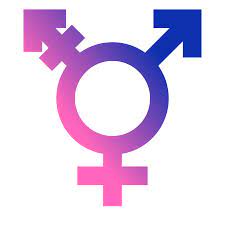In a world that is increasingly recognizing and celebrating the diversity of gender identities, terms like "cis male" are becoming part of everyday conversations. Understanding what this term means, along with the broader context of gender identity, can be incredibly enlightening. So, let’s delve into the nuances of what being a cis male entails and why it matters in the ever-evolving dialogue around gender.
What Does "Cis Male" Actually Mean? Let’s Break It Down
The term "cis male" refers to individuals who were assigned male at birth and identify as male. In simpler terms, if you were born with male anatomy and continue to identify with the male gender, you are considered a cis male. The prefix "cis" comes from Latin, meaning "on this side of," which stands in contrast to "trans," meaning "across" or "beyond." This distinction is crucial for understanding one’s gender identity in relation to the sex assigned at birth. Male To Female Transition Before And After
Cis males are often perceived as the default or norm within many societies, which can sometimes lead to a lack of awareness about the experiences of those who are not cisgender. This lack of visibility can contribute to misconceptions and stereotypes surrounding gender identity, making it important to articulate what being a cis male encompasses.
The Difference Between Cisgender and Transgender Explained
Cisgender refers to individuals whose gender identity matches the sex they were assigned at birth, while transgender is an umbrella term for those whose gender identity does not align with their assigned sex. For instance, a cis male feels comfortable identifying as male, whereas a transgender female was assigned male at birth but identifies and lives as female. It’s essential to understand these differences because they help frame the conversations around gender identity and the challenges that individuals may face.
This distinction also highlights the diversity within the transgender community, which encompasses a wide range of identities, including but not limited to transgender men, transgender women, non-binary, and genderqueer individuals. Acknowledging these differences enriches our understanding of gender and the spectrum of identities that exist.
History of the Term: Where "Cis Male" Comes From
The term "cisgender" was introduced in the early 1990s, primarily within medical and academic discussions about gender. It was aimed at providing a more nuanced vocabulary to describe individuals based on their gender identity relative to their assigned sex at birth. Over time, the term "cis male" emerged from this vocabulary to specify males who identify with their gender assigned at birth.
Historically, discussions around gender have largely focused on the experiences of transgender individuals, often sidelining the experiences of cisgender people. However, the introduction of "cis" has provided clarity on how societal norms shape gender experiences and has encouraged cis males to reflect on their identities and privileges within a gendered society.
Characteristics That Define a Cis Male Identity
Cis males may exhibit a range of characteristics, both socially and culturally, that align with traditional masculine norms. This can include behaviors, interests, and appearances that society typically associates with masculinity. For instance, cis males might engage in activities like sports, prefer certain styles of clothing, or resonate with conventional masculine stereotypes. However, it’s important to note that not all cis males will conform to these norms.
Moreover, cis males have the privilege of living in a world where their gender identity is widely accepted as the default. This acceptance can manifest in various ways, such as feeling comfortable in their gender expressions and having access to societal resources without facing discrimination based on gender identity. Yet, this privilege also carries the responsibility to understand and advocate for more equitable treatment of those who do not share the same experiences.
Common Misconceptions About Cis Males Explained
One common misconception is that all cis males are inherently privileged and exempt from struggles or challenges. While many cis males do benefit from societal norms, it’s vital to recognize that they can face their own personal struggles, such as mental health issues, socioeconomic challenges, or familial pressures. Privilege varies based on other intersecting identities, like race, class, and sexual orientation, making the experience of being a cis male far from a monolithic one.
Another misconception is that cis males cannot be allies in gender discussions or that they have no role in advocating for transgender rights. On the contrary, cis males can play a crucial part in supporting gender inclusivity and understanding by listening, educating themselves, and challenging harmful stereotypes. Engaging in these dialogues can help bridge gaps in understanding and foster a more inclusive society.
Why the Term "Cis Male" Matters in Today’s Society
The term "cis male" matters because it helps to frame discussions about gender in a more inclusive manner. By labeling and defining cisgender identities, we acknowledge and validate the experiences of those who have historically been seen as the norm. In a society that has often marginalized transgender voices, recognizing what it means to be a cis male can help foster empathy and support for all gender identities.
Additionally, using specific terms like "cis male" encourages more nuanced conversations about gender dynamics and can challenge traditional stereotypes. It prompts cis males to reflect on their roles within gender discussions, thus fostering greater awareness and inclusivity, which is essential for dismantling gender-based discrimination.
How Cis Males Fit into the Gender Spectrum
Cis males fit into the gender spectrum as one of the many identities that compose it. While they embody a traditional male identity, the gender spectrum acknowledges that there are countless ways to experience and express gender. This understanding helps deconstruct the binary system of male and female, allowing for a more expansive view of gender that includes non-binary and gender-diverse identities.
Recognizing cis males as part of this spectrum also encourages conversations about masculinity and how it can be redefined. By engaging with diverse gender identities, cis males can challenge toxic masculinity norms and embrace a more inclusive interpretation of what it means to be male, ultimately promoting healthier expressions of masculinity.
Embracing Inclusivity: Understanding All Gender Identities
Embracing inclusivity means recognizing and respecting the myriad gender identities that exist beyond just male and female. Understanding the term "cis male" can be a starting point for appreciating the complexities of gender. It helps foster a space where individuals can express their identities without fear of judgment or discrimination.
By promoting inclusivity, society can work toward dismantling harmful stereotypes and fostering an environment where everyone, regardless of gender identity, feels valued and understood. This collective effort is crucial for forging a more equitable world where every individual can thrive.
Understanding what "cis male" means is just one part of the larger narrative surrounding gender identity. In our quest for inclusivity, it is essential to acknowledge the experiences of all individuals, whether cis or transgender. By doing so, we not only enrich our conversations around gender but also cultivate a society that celebrates diversity in all its forms. The path toward inclusivity is a shared journey, and understanding terms like "cis male" is a vital step in that direction.


